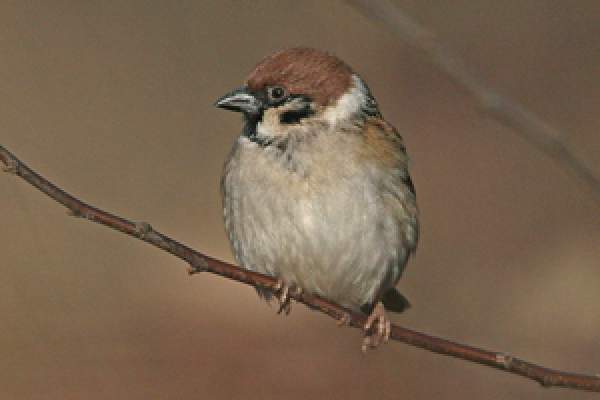Tree Sparrow
Passer montanus

Tree Sparrows are fairly easy to separate from House Sparrows once you have 'got your eye in'. Both male and female Tree Sparrows are of similar appearance. Tree Sparrows have a characteristic warm red-brown crown, white patches to the sides of the head and a small black cheek patch.
The black bib is much smaller than that seen in a male House Sparrow, reaching only the top of the chest and narrow in outline. Juvenile birds are similar in appearance to the adults, but are duller in colour and have dark rather than white cheeks. They still retain the warm red-brown cap.
Tree Sparrows are loosely colonial in nature and you will see small flocks during the breeding season. In winter, much larger flocks can be seen, often mixing with finches and House Sparrows at those sites where food is readily available.
During the breeding season, Tree Sparrows feed their young on insects. For the rest of the year, they largely depend on seeds, preferring smaller weed seeds to cereal grain. Modern selective herbicides mean that these seeds are now much harder to find, as the seed bank in the soil of arable fields declines. The loss of stubble fields must reduce food availability in winter.
Find out more about Tree Sparrows on BirdFacts and the Wider Countryside Report.






Share this page